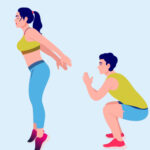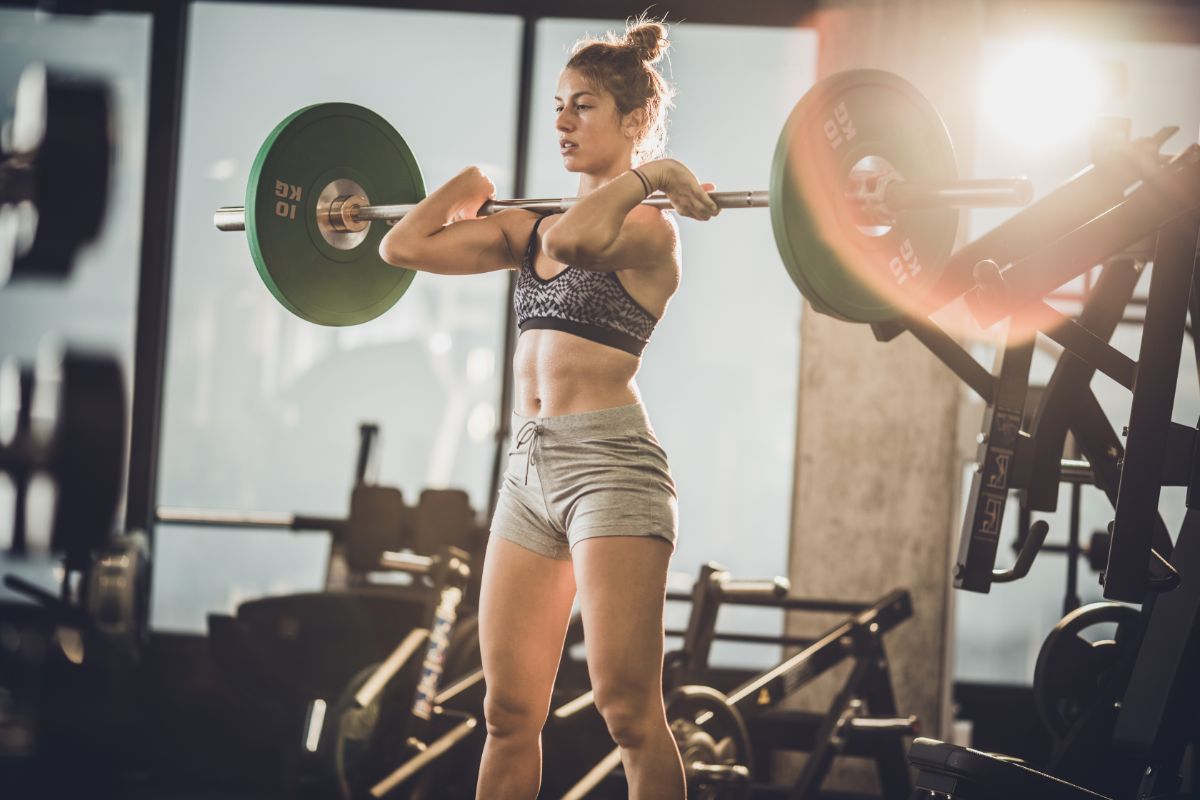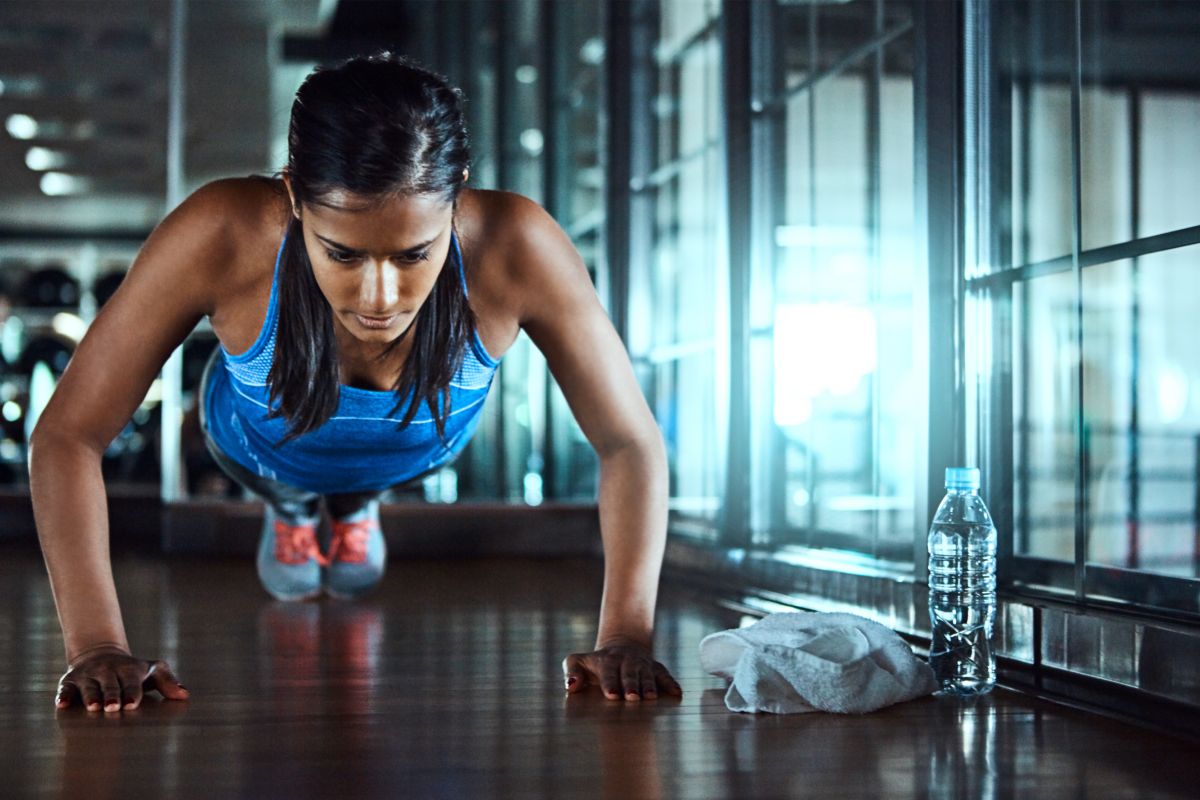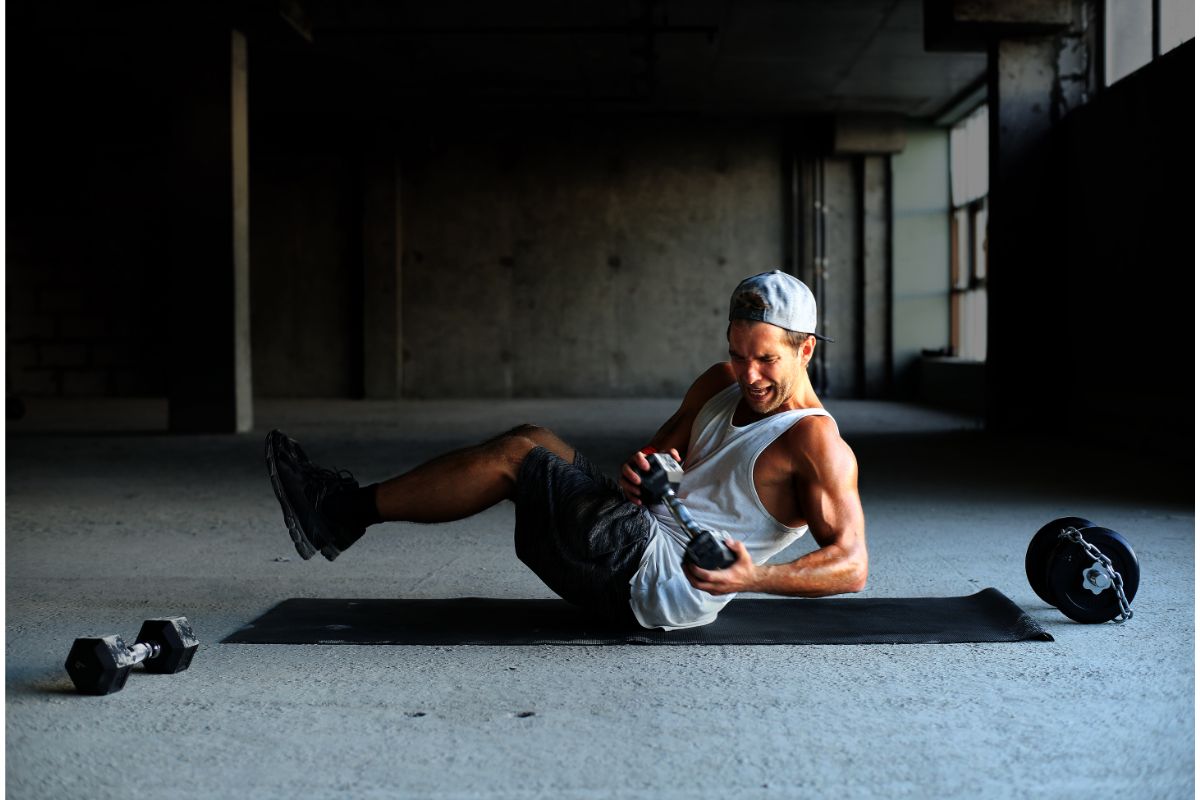Last Updated on October 23, 2022 by TJ Daniels, Certified Personal Trainer
When you think of building muscle, it’s likely that you are thinking about using various types of equipment and weights to build muscle. When it comes to calf exercises, however, you can build this muscle quickly without the need for expensive equipment.


One of the most stubborn muscle groups in the human body are the calf muscles.
We can probably all think of someone that is in very good shape with big muscles everywhere, except their calves.
The reason for this is usually because that they are not doing the exercises properly, they are not including enough variety in their calf workouts, or they are skipping calf exercises altogether.
Oftentimes, assuming calf exercises are part of your routine, the basic calf raise is the only calf exercise found.
Your calve muscles are used much more frequently than you probably give them credit for, however, it is still important to do some specific exercises to keep them flexible, strong, and healthy.
In this guide, we’ll be taking you through everything that you need to know about calf exercises without equipment.
By working your calf muscles at home on a frequent basis, you will be able to notice a big difference in no time.
What Is The Calf Muscle?
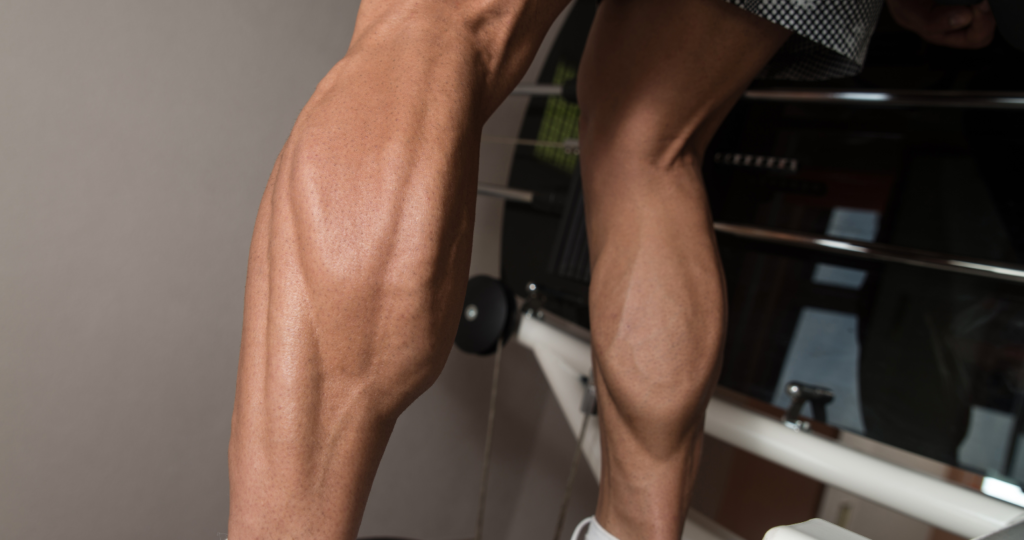

So, before we delve into the best calf exercises that you can undergo to grow your calf muscles, it’s essential to understand what the calf muscle actually is.
By understanding the muscle better, when you are doing the exercises, you will understand how these exercises work and benefit the muscle.
Your calf muscle is the muscle in the back of your lower leg which runs from just below your knee to your ankle.
The calf muscle provides support to most of your standing movements. The calf muscle is needed for all activities that require you to flex your foot, such as walking, jogging, running, skipping, jumping, etc.
Calf Muscle Anatomy


The calf muscle is made up of two major muscles known as the gastrocnemius and the soleus. The former is located at the top and is a smaller and bulbous muscle, while the latter is a longer and wider muscle and sits beneath the gastrocnemius.
The calf muscle is made up of both of these muscles and conditioning and strengthening both of these will help build up your calf muscle.
Technically, there is also a third, much smaller muscle in the calf called the plantaris muscle, which runs between your two major calf muscles.
However, there isn’t much that needs to be said about this muscle as it really is just a supporting muscle and gets plenty of work when you exercise your major calf muscles.
How Does The Calf Muscle Work?
The way that your calf muscle works is by contracting when you are extending your feet and toes.
If you lift your leg out straight in front of you and point your toes out straight so they are parallel with your leg, you should get a good feeling of the contracting the calf muscle does when you move your foot or ankle.
Another way to really feel how the calf muscle works is to stand with your feet shoulder width apart and then move up onto your toes. Then slowly lower your heels to the ground, focusing on how your calf muscle is working throughout the movement.
For all sorts of sports, the calf muscle is an essential part of performance and elite athletes often dedicate plenty of time in their exercise regime to their calves to ensure that they are at the strongest they can be.
Incorporating calf exercises will not only improve your performance level and fitness, but it will also improve your balance, stability, and can lead to better posture.


Ways To Build Your Calf Muscle Without Equipment
Now that you know what the calf muscle is and why it is important, we’ll be delving into the various ways that you can build the muscle without using any equipment or weights.
Here are the ways that you can build your calf muscle without using equipment:
Calf Raises
One of the best calf workouts and most popular are calf raises. A calf raise is easy and can be performed on an elevated surface such as a curb or stairway.
Including these in your daily exercise will ensure that your calf muscles are conditioned and strengthened in no time.


Here is how you can successfully perform calf raises:
- Find an elevated step that is approximately four inches from the ground.
- Approach the step with your feet hip width apart.
- Stand with the balls of your feet on the step with the back of your foot hanging from the step.
- Lower your heel by two to three inches.
- Stand on the balls of your feet so you are pressing up your body.
- Repeat this process between 15 to 20 times to get the most out of your workout.
- Incorporate 2-3 sets in your exercise regime to fully work your calf muscles.
- Change the positioning of your feet, so your toes are pointed outward and then inward, so various parts of your calf muscle are targeted.
A calf raise is great because it allows you to target different areas of the muscle, allowing your muscle to build quickly, even when no equipment is being used.
Make sure you are rotating double leg calf raises and the single leg calf raise to incorporate variety into your routine.
You can also do a seated calf raise at home while you are sitting on a chair or couch, rotating each leg back and forth! Make sure to stay on the ball of your foot for maximum effectiveness when you lower your heels.
Calf Stretches
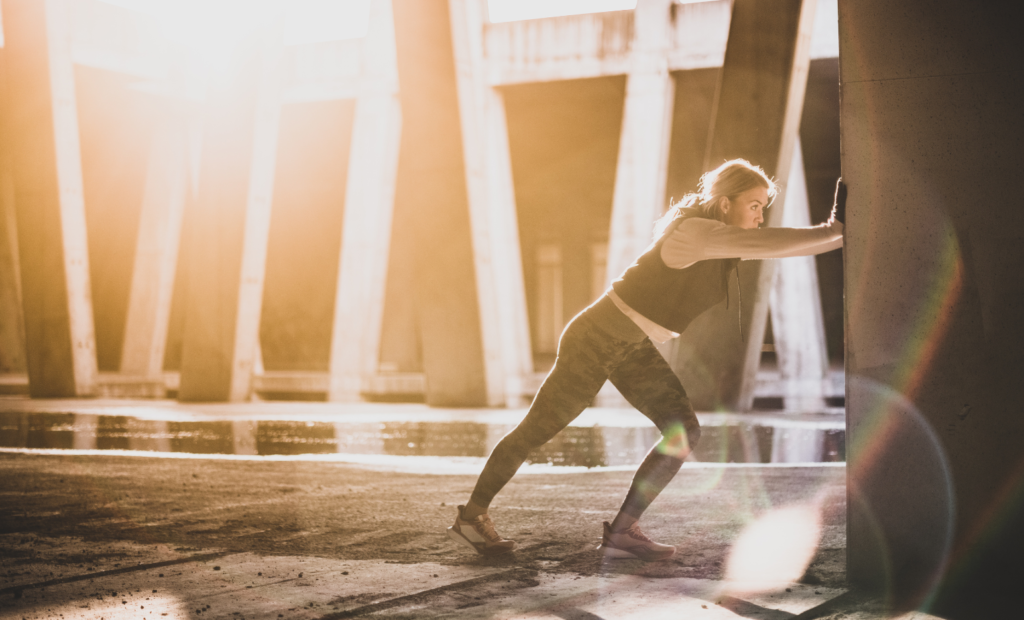

The second option you can do is to perform the calf stretch. Elongating your calf muscle will ensure that it is as conditioned and strengthened as possible, which in turn can help prevent injury when doing other exercises.
Calf stretches are easy to do as you simply elongate your calf and hold the stretch for approximately 30 seconds each time. Repeat this process three times and perform the stretch in different positions to target various areas of the muscle. This will help build the muscle faster.
Best Way To Perform Calf Stretches
- With your feet hip width apart, face a wall and then place your hands at shoulder height on the wall.
- Step approximately two feet away from the wall with one foot behind the other.
- Keep your knee straight in order to work the gastrocnemius muscle and then lean towards the wall to feel the pull on your calf muscle.
To work the soleus muscle, simply repeat this process but stretch with the back knee bent in order to work this part of the calf muscle.


Jump Rope or Jumping in Place
Our third option can be done with or without a jump rope and is an effective exercise for your calves and will also help you build stamina and burn calories.
Jumping may seem like an odd choice, but many athletes rely on jumping in their routine because of the various benefits that it provides.
Many high performing athletes jump rope on a regular basis and is one of the best calf workouts around!


Jumping is a cardiovascular workout that works all kinds of muscles. To work your calf muscle, make sure that you keep your feet shoulder width apart or closer and jump from the balls of your feet.
Beginners should target one minute of jump rope before working their way up to around three or more minutes. Jumping jacks are also a great way to slowly work yourself up to more time and more difficult exercises.
While jumping, make sure you are taking turns pointing your toes in and out to work various areas of the calf muscle. Similar to other calf exercises, it is best to target them from multiple angles.
Lunge Pulses
Our final recommendation is lunge pulses which is a variation of the forward lunge that is great at working your calves and other leg muscles.
When doing your lunge pulses, make sure that you are keeping your chest up so that you are maintaining proper form and working your calf muscle.
Here is the best way to perform lunge pulses:
- Begin by standing with your arms at your sides and your feet together.
- Using your right foot, step forward, so you are lunging, bending your right leg at a 90-degree angle at your knee while extending your left leg with the knee bent behind you.
- Pulse yourself up until your left leg is fully straightened and bend the knee to complete one full lunge.
- Repeat this process 15 times for each leg.
This is a great activity for those who really want to work their calf muscles and will allow you to work each side for as long as you can, ensuring that your muscles are properly trained.
Frequently Asked Questions
Can I Grow My Calves Without Weights?
Growing your calf muscles without using weights is completely possible as you can use your body weight as resistance.
Making sure you are regularly working out and incorporating warm-ups, exercise, and stretching, will allow you will build your muscles in no time while preventing the risk of aches or injuries.


What Food Help With Building Calves And Other Muscles?
There are certain foods that you can consume to help build your calf and other muscles. This includes:
- Dairy such as cheese, low-fat milk, and yogurt.
- Fruits such as bananas, berries, grapes, and watermelon.
- Grains such as oatmeal, quinoa, and whole-grain bread.
- Meats such as chicken breast, pork tenderloin, sirloin steak, and tilapia.
- Starchy vegetables such as cassava, Lima beans, and potatoes.
Does Walking Increase Calf Size?
Walking will not bulk up your calf muscle size tremendously, but it can help with toning, balance, and help prevent calf injuries. If you are wanting to build your calf muscle size via walking, then walking on an incline will work your muscles significantly more.
Or, while walking, you can walk slowly and do a calf raise at the top of each step making sure you are fully extending and flexing your calf muscles.
You could use this walking technique to replace your single leg calf raise routine.


Conclusion
In conclusion, building your calf muscles without weights may take longer to achieve compared to using weights, but it can be done. By working on your calves regularly every week, you’ll be able to build these muscles.
Make sure that you are leading a healthy lifestyle while also ensuring that you are doing other kinds of exercise such as running or cycling to ensure that you are working your muscles in many different ways.
Consulting a personal trainer is always a good option to ensure you are always using the proper form.
- How To Start HIIT Workouts [Beginner’s Guide] - May 18, 2023
- How To Sneak A Workout In While Taking Care Of Your Baby - March 17, 2023
- How To Build Your Chest With Dumbbells [Guide] - February 9, 2023

